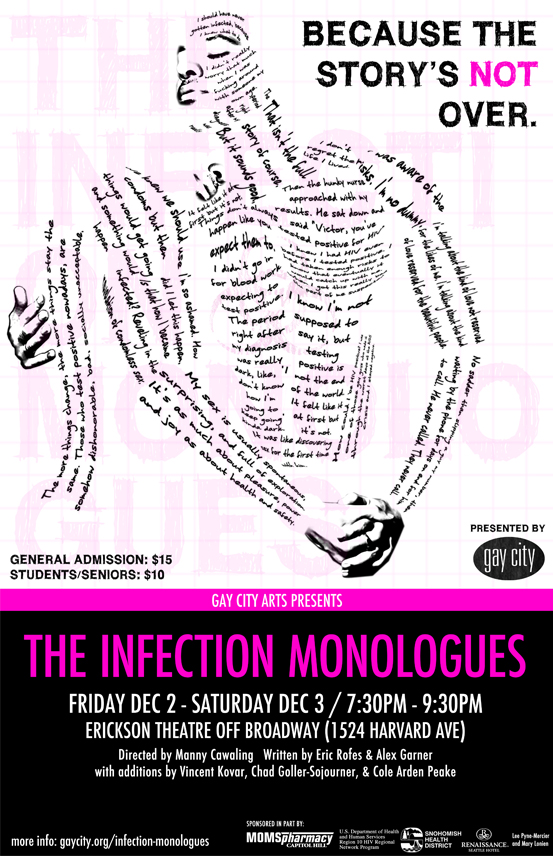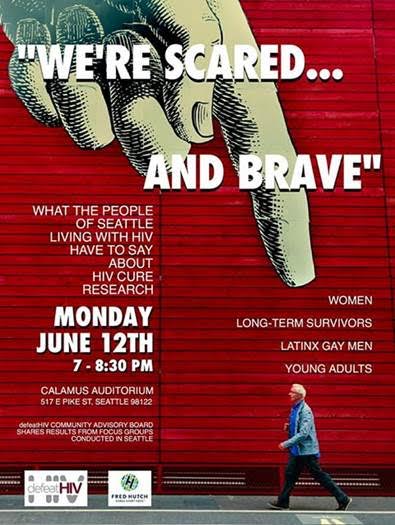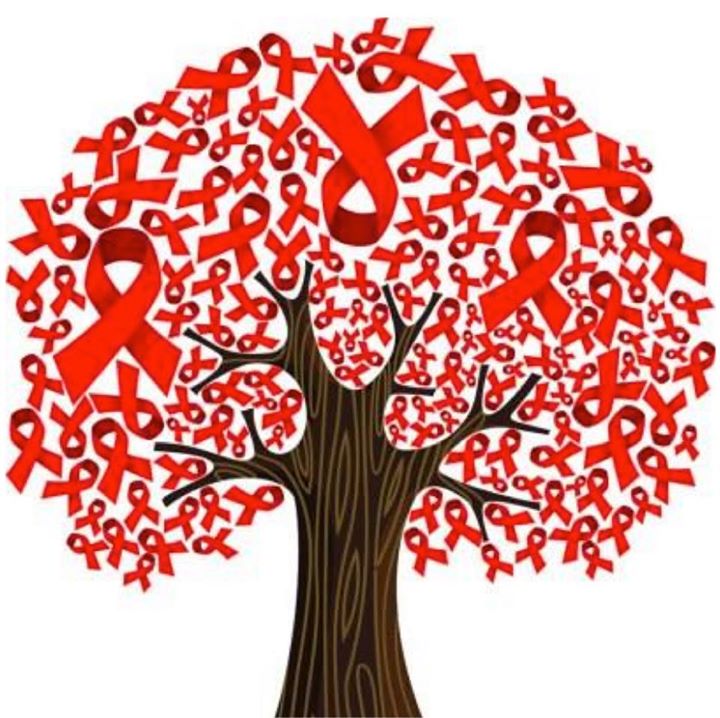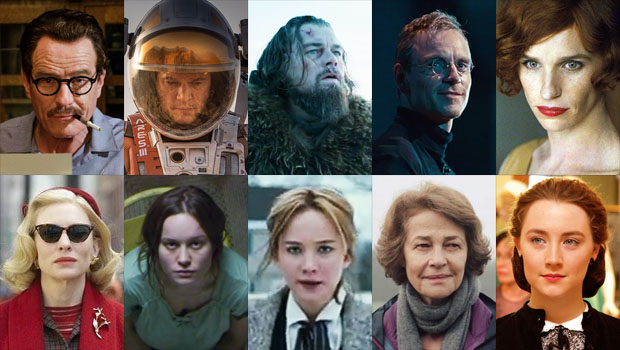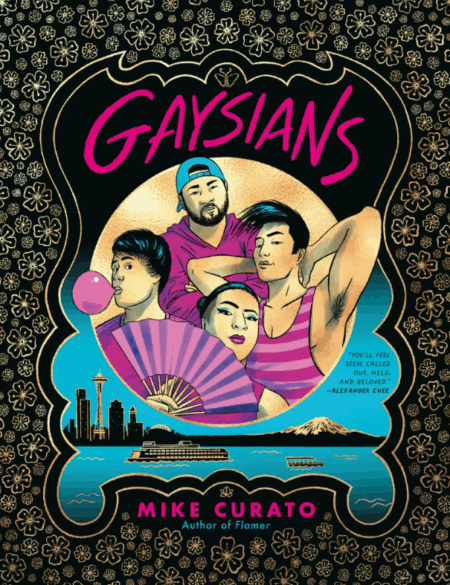It’s only been a few hours since World AIDS Day and you have an opportunity to join your fellow community members for an epic night of theater to continue the conversation on HIV and AIDS. .Gay City Heath Project is bringing back “The Infection Monologues” to the Erikson Off-Broadway Theater tonight and tomorrow night. This story is a touching, funny and hits-the-right-spot show that will surely educate you without the boredom of retaining knowledge. In the heat of the minutes leading up to showtime, Seattle Gay Scene swiped some brief minutes with the director, Manny Cawaling during the chaotic technical week leading up to opening night.
B.Michael Peterson: Manuel, What brought you to Gay City Heath Project and more specifically, The Infection Monologues?
Manny Cawaling: I grew up on Capitol Hill. I remember, quite vividly, the outbreak of HIV/AIDS during the 1980’s. I was a child living in the epicenter. For many years, you couldn’t turn a corner on the Hill without seeing men who were in the final stages of AIDS; at the grocery store, the old Broadway Market, a restaurant, at church, or just walking down the street. Honestly, it scared and moved me. It was very sad watching these men wither away, seemingly robbed of dignity and life. I believe those experiences sparked a deep compassion within me for people whose lives are changed by becoming positive. Years later, I was working as the Exhibit Developer for the Wing Luke Asian Museum. I spearheaded a new exhibit about the impact of HIV/AIDS on the lives of Asian Pacific Americans. Through the course of developing the exhibit, I conducted 20 oral history interviews of people living with HIV/AIDS, partners and family members left behind, social workers and other people impacted by the epidemic. People shared photos, stuffed animals, letters, and, most profoundly, truly rich stories that inspired and moved me. Helping those individuals articulate their story changed the shape of my heart. I am HIV negative but I don’t think you have to be positive to feel the power of this story. Like everyone else, I have known people who have died from AIDS or are, today, living healthy lives with HIV. Times have changed and I think it’s important for us as a community to catch up.
Peterson: While directing this project what was your number one goal as the leader, thinker and visionary creative?
Cawaling: Starting out, I directed the creativity of my team to create a story that spoke to as many different viewpoints as possible. With a topic like HIV, or any topic for that matter, it’s easy for people to flippantly dismiss it by saying, “That has nothing to do with me.” I wanted us to break through that. Whether, you are hiv positive or not, gay or not, healthy or not, you can connect to this story in one way or another. However, my ultimate goal was to set the stage where the stories of individuals living with HIV would be told. In our society, so many people that live on the fringe or are not part of the mainstream are marginalized. Their stories aren’t shared and their experiences are ignored. And, sorely, the whole community loses out because there is so much to learn from them. This has been a regular theme in my work; from working with ethnic community, refugee communities, youth at risk and many others; I am deeply committed to sharing and celebrating the often invisible stories within our community.
Peterson: From an artistic point of view, what do the stories shared in this production convey or hope to convey to the community?
Cawaling: Men who are HIV positive are alive. They are sexual. They are living their lives and they cannot be framed by the old constructs of what living with HIV used to mean. However, it’s only fair to remind ourselves that this viewpoint of the picture is our view as Americans with reasonable access to healthcare. For many others on different sides of the world or without access to proper healthcare, it might as well still be the 1980’s. People still die from AIDS every day. We should not forget that.
Peterson: In your opinion, is the distinct differences between a queer director and a non-queer director?
Cawaling: Artists create and therefore speak from the spectrum of their lives. Therefore queer artists speak from a different spectrum than non-queer. Sure, we’re all people. But inherently, queer artists understand there is a broader complexity to sex, sexuality, gender and love.
Peterson: There are some local writers who came on board to increase the story. Were you involved with the writing process with the Seattle-based writers?
Cawaling: Yes, I was. Gay City and I believed it was very important to include a Seattle spin and to also create an opportunity for Seattle artists to create and collaborate on this important story. Seattle has an amazing array of queer artists. Gay City is creating a new initiative to include them in their work and share their creativity with the community. Art creates an dynamic way to carry out Gay City’s mission and to tell important and dynamic stories.
Peterson: What do you anticipate your audiences to walk away from this show feeling or saying or talking about?
Cawaling: It is my hope that HIV positive men will walk away with pride from seeing their lives and experiences mirrored on stage. And that people who aren’t HIV positive will have a deeper more connected understanding of the contemporary and complex challenge of living with HIV. I also hope the show will dispel the dated 1980’s perception that living with HIV is equivalent to death, a sexless life and feelings of guilt and shame. Everyone has a reason to live. Everyone has something important to share and we will all be better people if we take the time to listen and absorb.


